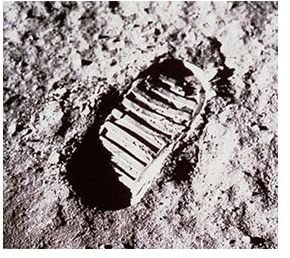Understanding Copyright Free & Stock Photography: What are the Differences?
Photography and intellectual property
Although many people do not realize it, photographs are intellectual property, subject to copyright rules just like other creations of the
mind. As copying and pasting is so easy on the Internet, many people make a copy of an image or photograph they find on the web and paste it into their own site. Often, that is a copyright violation. So, how do you know what is legal to use, or what is an infringement of the work of someone else?
Although it is not as well known as the takedown notices and lawsuits pursued by RIAA, online stock photography agencies such as Getty send out letters to websites regularly, informing them they have infringed on their copyright. While they have not received the same publicity, they may threaten a website owner using one of their pictures with a lawsuit and demands for $1000 in damages for using an image. There are starting to be questions raised about the appropriateness of their tactics - but such a letter could be devastating if you get one.
Is stock photography copyright free?
Stock photography is a collection of images that can be used for many purposes. Collections of stock photos were originally created from images taken on shoots and not used - extra material that could be used for general uses, rather than for a specific shot - for instance a shot taken to be the cover of a magazine. The images are copyrighted, either by the photographer, or by the agency controlling the images. Under the laws governing intellectual property, the copyright holder has to grant rights to someone to use his or her work.
While stock photography sites sometimes do have photos people are allowed to use for free, or size/resolutions they do not restrict, it is advisable that you understand exactly how the site allows use.
In the article Understanding Royalty Free and Rights Managed Stock Photography, you can learn about the basic rules for licensing stock photographs.
It is sold by the image, as royalty free images. Royalty free stock photography does not mean that the photo is copyright free - and definitively may not be free to use. It means that you can buy the use of an image, and use it a certain number of times, on a single project. Other people can purchase the right to use the same image for their own uses. The photos are much cheaper than stock photos were in the past, and much cheaper than royalty managed photos, which have some exclusive features and can be very expensive.
If you are considering using stock photographs on your website or in a desktop publishing project, read Using Stock Photography for your DTP Project, and understand the license you are acquiring to the images you want to use. There are now different models for getting stock photographs, and depending on your needs, you may want a subscription, or to buy the right to an image individually, depending on how many different images you expect to need regularly.
If you are on a limited budget, try using the information in this article on copyright free & stock photography to locate images which you will not have to pay for, and feel secure you are not infringing a copyright.
Copyright free photography
Copyright free photography occurs in different ways. Copyright is for a limited time period. Limited in the sense that it does end, because current US law provides copyright continues for 70 years after the creator’s death. So, once an image is old enough, it moves into the public domain - where anyone can use the material without restriction.

Many governments put images they own into the public domain. Images taken by government sources are available for anyone’s use - such as those taken by NASA. This does not cover images made by government contractors. The Library of Congress has a searchable database of images, some of which are copyright free, and some of which are in the public domain. Along with each image on the LOC site, the copyright status and related information is included, letting you know if you can use material, and what conditions there are on using the image.
And some people deliberately release their material they have copyright to into the public domain. This could be confusing, and Creative Commons licenses were developed to codify this process. Depending on the Creative Commons license a copyright owner selects, the material they license is available, as long as the license is complied with. There is a license for non-commercial use, one that allows commercial use, one that allows derivative creations, and so on, for a total of six types. In general. the license types I have read require attribution - an acknowledgment of the source of the material.
Sites such as Wikipedia require that any image posted on the site have a Creative Commons license for free use, be in the public domain, or be there under the doctrine of fair use.
Copyright free is related to a movement known as copyleft - and material released under a copyleft license is available to be used by anyone - but there are some hidden issues. Any project you make using copyleft material must be released under the copyleft license as well - which means that the person creating the project incorporating that material cannot have a normal copyright to that project, even if the copyleft material is only a small portion of the whole.
Image from NASA.gov - first footprint on moon
Why does the difference between copyright free & stock photography matter?
It is important to have an understanding of the difference between stock photography, which may be royalty free, and copyright free photos. Using copyright free photography, even if you neglect to attribute it, will not get you into legal trouble. Using stock photos without permission may mean you receive a letter demanding you pay damages for illegal use of copyrighted material.
While you may have no legal need to attribute the copyright free photos or images you use, it is courteous, and responsible to acknowledge the source of any image you use. Work went into creating that image, and attributing an image shows you respect that effort.
Is stock photography free?
There are a number of reputable stock photography sites who have free royalty free images. Here are five sites where you can find stock photos which will not cost you to use. Again, it is important that you understand the restrictions those sites may put on your use. For instances, some sites allow you to use some images for personal or non-profit uses, but forbid commercial use.
Where do you find copyright free photos?
This article also lists 5 sites where you can find free royalty free images and clip art. While there is some overlap with sites from the previous article, there are other sites as well. It includes some options for obtaining photos previously discussed, and it provides the links you need to get to the sites. The list has both copyright free & stock photography royalty free images.
Many of the sites which have free images, and allow their use through Creative Commons licenses, also allow you to sort the images by

the type of license. If you are creating a scrapbook, or a card for your teacher, you need not worry the image you use does not allow commercial use. However, if you are writing an article for Bright Hub, and wanted to illustrate it with an image, it is very useful to be able to sort through images and find those which allow commercial use.
Image by rscudder
Where do you find sources for stock photography?
There are a number of sites that sell microstock; the practice of selling single images for small amounts. This article covering six best microstock sites has links to each. They are iStock, Dreamstime, Shutterstock, fotolia, StockXpert and Bigstockphoto.
